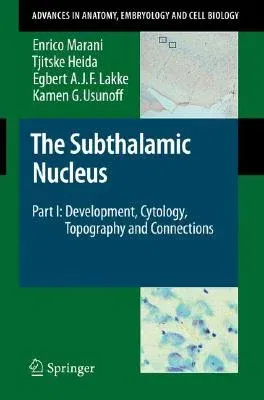Enrico Marani
(Author)The Subthalamic Nucleus: Part I: Development, Cytology, Topography and Connections (2008)Paperback - 2008, 23 July 2008

Qty
1
Turbo
Ships in 2 - 3 days
In Stock
Free Delivery
Cash on Delivery
15 Days
Free Returns
Secure Checkout

Part of Series
Advances in Anatomy, Embryology and Cell Biology
Print Length
117 pages
Language
English
Publisher
Springer
Date Published
23 Jul 2008
ISBN-10
354079459X
ISBN-13
9783540794592
Description
Product Details
Book Edition:
2008
Book Format:
Paperback
Country of Origin:
DE
Date Published:
23 July 2008
Dimensions:
22.86 x
15.49 x
0.76 cm
ISBN-10:
354079459X
ISBN-13:
9783540794592
Language:
English
Location:
Berlin, Heidelberg
Pages:
117
Publisher:
Weight:
272.16 gm